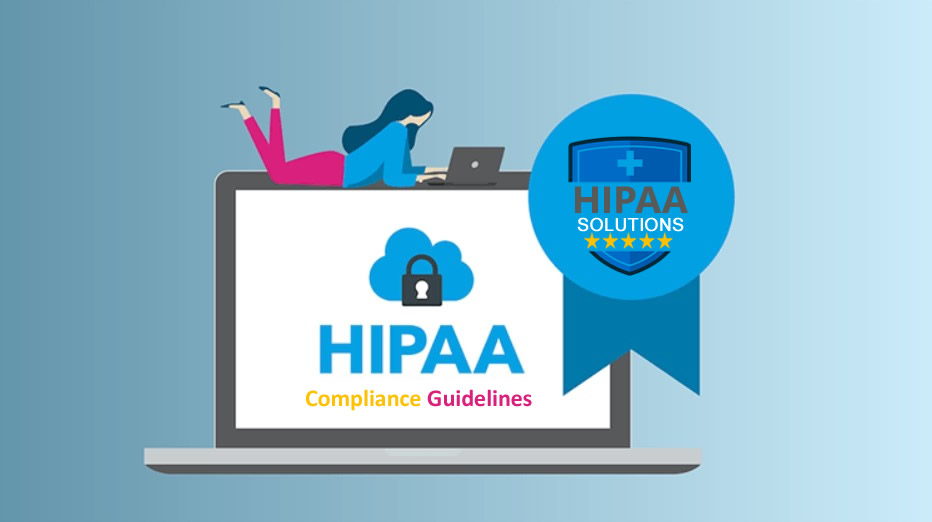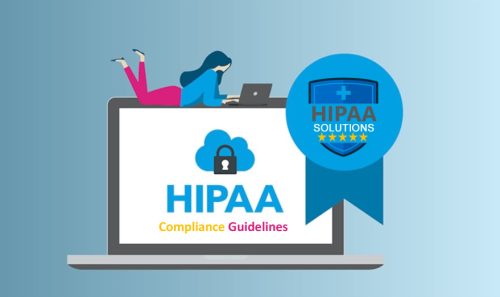
Chiropractors HIPAA Compliance Guidelines
Healthcare practices, including chiropractic clinics, have a responsibility to protect patient privacy and ensure the security of personal health information. The Health Insurance Portability and Accountability Act (HIPAA) sets the standard for safeguarding sensitive patient data in the United States. This article will provide an in-depth understanding of HIPAA compliance for chiropractors, outlining the essential guidelines and training to help maintain the privacy and security of patient records. You can also checkout the HIPAA Compliance Checklist for self audit and assessment.
As healthcare providers, chiropractors must adhere to HIPAA regulations to protect their patients’ personal health information (PHI). This requires implementing appropriate administrative, physical, and technical safeguards to secure the confidentiality, integrity, and availability of PHI.
a. Administrative Safeguards
Chiropractors must establish policies and procedures to manage the selection, development, and maintenance of security measures. This includes conducting regular risk assessments to identify potential vulnerabilities, creating a risk management plan, and designating a privacy officer to oversee HIPAA compliance.
b. Physical Safeguards
Physical safeguards involve securing access to facilities, workstations, and electronic devices. Chiropractors should implement access controls, such as keycards or alarms, to limit unauthorized access to areas containing PHI. Additionally, they must establish policies for proper workstation use and electronic device disposal.
c. Technical Safeguards
Technical safeguards focus on protecting electronic PHI (ePHI) through the use of technology, including encryption, access controls, and audit controls. Chiropractors must implement authentication protocols, such as passwords or biometrics, to restrict access to ePHI and regularly review system activity to detect potential security breaches.
As a chiropractor, it is crucial to ensure that you are complying with HIPAA regulations to protect your patients’ sensitive health information. HIPAA compliance can be a complex process, but with Five Stars HIPAA Solutions, we make it easy for chiropractors to achieve and maintain compliance.
Our HIPAA compliance program is designed specifically for chiropractors and includes policies and procedures, employee training, risk assessments, and breach notification. We work with you to identify potential vulnerabilities in your practice’s safeguards and provide recommendations to address these vulnerabilities.
Chiropractic HIPAA Guidelines: Protecting Patient Privacy
HIPAA guidelines are specific requirements that chiropractors must follow to protect patients’ sensitive health information. These guidelines cover a wide range of areas, including patient privacy, security, and breach notification. At Five Stars HIPAA Solutions, we are committed to helping chiropractors comply with HIPAA guidelines and protect patient privacy.
Chiropractors must comply with HIPAA’s Privacy Rule and Security Rule, which outline specific standards for protecting PHI and ePHI.
a. Privacy Rule
The Privacy Rule establishes standards for the use and disclosure of PHI, requiring chiropractors to obtain written consent from patients before sharing their information. Chiropractors must also provide patients with a Notice of Privacy Practices, detailing how their PHI will be used and their rights to access, amend, or request restrictions on their records.
b. Security Rule
The Security Rule focuses on the protection of ePHI and mandates that chiropractors implement a combination of administrative, physical, and technical safeguards to ensure the confidentiality, integrity, and availability of their patients’ data.
Chiropractor HIPAA Training: Educating Employees
HIPAA compliance requires more than just policies and procedures – it also requires employee training to ensure that everyone in your practice understands their responsibilities under HIPAA regulations. Regular HIPAA training is essential for chiropractors and their staff to maintain compliance and avoid potential violations. Training should cover the following topics:
a. Understanding HIPAA Regulations
Chiropractors must be familiar with the key provisions of HIPAA, including the Privacy Rule, Security Rule, and Breach Notification Rule, to ensure they are meeting regulatory requirements.
b. Recognizing and Reporting Privacy Breaches
Staff must be trained to identify potential breaches of PHI and understand the steps to report and mitigate any unauthorized disclosures.
c. Implementing Best Practices
Training should also cover best practices for maintaining patient privacy, such as proper recordkeeping, secure communication methods, and the use of encryption.
HIPAA Security Rule for Chiropractic: Protecting Patient Information
The HIPAA Security Rule establishes standards for protecting electronic PHI (ePHI) and is crucial for chiropractors as they increasingly rely on electronic systems for patient records and communication. The Security Rule comprises three types of safeguards:
Chiropractic Privacy Practices: Ensuring Patient Confidentiality
Chiropractors must implement privacy practices to ensure that patient information is kept confidential and only shared with authorized individuals. Chiropractic practices must follow the HIPAA Privacy Rule to safeguard patients’ PHI. Key components of the Privacy Rule include:
a. Notice of Privacy Practices
Chiropractors are required to provide patients with a Notice of Privacy Practices (NPP), outlining how their PHI will be used, their rights to access and amend their records, and the practice’s legal obligations concerning PHI.
b. Patient Consent and Authorization
Before disclosing PHI, chiropractors must obtain written consent or authorization from patients. Exceptions include disclosures for treatment, payment, or healthcare operations, or when required by law.
c. Minimum Necessary Standard
Chiropractors must adhere to the minimum necessary standard, disclosing only the minimum amount of PHI necessary to achieve the intended purpose.
HIPAA Risk Assessment Chiropractors: Identifying and Addressing Vulnerabilities
HIPAA risk assessments are essential for chiropractors to identify and address potential vulnerabilities in their practice’s safeguards. Regular risk assessments are vital to identify potential vulnerabilities and ensure HIPAA compliance. Chiropractic practices should follow these steps for effective risk assessments:
a. Scope
Define the scope of the assessment, including the types of ePHI handled and the electronic systems used to store, process, and transmit ePHI.
b. Data Collection
Identify all ePHI sources, including electronic health records, billing systems, and communication tools, and document the flow of ePHI within the practice.
c. Risk Identification
Analyze potential threats to the confidentiality, integrity, and availability of ePHI, such as unauthorized access, data breaches, or natural disasters.
d. Risk Analysis
Evaluate the likelihood and impact of identified risks and prioritize them based on the level of risk they pose.
e. Risk Management
Develop and implement risk management strategies, including administrative, physical, and technical safeguards, to mitigate identified risks.
Chiropractic Patient Records
Proper handling of chiropractic patient records is essential to protect patient privacy and comply with HIPAA regulations. Key aspects of managing patient records include:
a. Record Retention
Chiropractors must retain patient records for a minimum period as required by state laws and HIPAA regulations. They must ensure the security and accessibility of the records during the retention period.
b. Patient Access
Under HIPAA, patients have the right to access their records, request amendments, and obtain copies. Chiropractors must establish a process for patients to exercise these rights in a timely manner.
c. Record Disposal
Chiropractors must dispose of patient records securely and in accordance with HIPAA regulations, ensuring the complete destruction of PHI to prevent unauthorized access.
Chiropractic PHI Protection
Safeguarding PHI is a fundamental aspect of HIPAA compliance. Chiropractic practices should implement various measures to protect the confidentiality and security of patient data:
a. Administrative Safeguards
Develop policies and procedures to manage security measures, including risk assessments, risk management plans, and the designation of a privacy officer to oversee compliance.
b. Physical Safeguards
Implement access controls to restrict unauthorized access to areas containing PHI, and establish policies for workstation use and electronic device disposal.
c. Technical Safeguards
Employ encryption, access controls, and audit controls to protect electronic PHI (ePHI) and monitor system activity for potential security breaches.
d. Employee Training
Provide regular HIPAA training to staff members to ensure they understand their responsibilities in protecting patient privacy and managing PHI.
HIPAA Breach Notification for Chiropractors
Chiropractors must be prepared to handle potential breaches of PHI in compliance with HIPAA’s Breach Notification Rule. Key components of the rule include:
a. Breach Discovery
Chiropractors must establish a process for identifying potential breaches and determining whether unauthorized access, acquisition, or disclosure of PHI has occurred.
b. Breach Assessment
Evaluate the potential harm caused by the breach, considering factors such as the type of PHI involved, the extent of unauthorized access, and the likelihood of PHI being misused.
c. Notification Requirements
If a breach affecting 500 or more individuals occurs, chiropractors must notify the affected individuals, the U.S. Department of Health and Human Services (HHS), and prominent media outlets within 60 days of discovering the breach. For breaches affecting fewer than 500 individuals, chiropractors must notify the affected individuals within 60 days and report the breach to HHS within 60 days of the end of the calendar year.
d. Mitigation and Prevention
Chiropractors must take steps to mitigate the harm caused by the breach and implement preventive measures to reduce the likelihood of future breaches.
HIPAA compliance is crucial for chiropractors to protect their patients’ privacy and maintain the security of personal health information. By understanding and implementing the appropriate guidelines and undergoing regular training, effectively managing patient records, protecting PHI, and adhering to breach notification requirements, chiropractors can ensure the security and confidentiality of sensitive patient information while meeting regulatory obligations.

